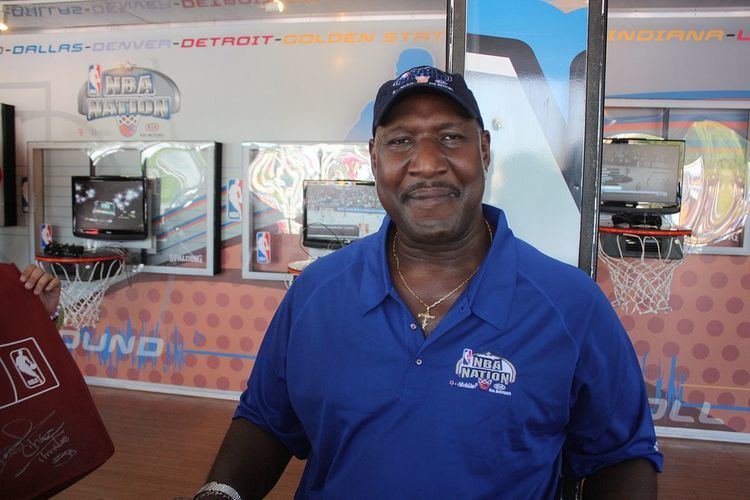Date(s) May 29, 1975 | ||
 | ||
First selection | ||
The 1975 NBA draft was the 29th annual draft of the National Basketball Association (NBA). The draft was held on May 29, 1975, before the 1975–76 season. In this draft, 18 NBA teams took turns selecting amateur U.S. college basketball players and other eligible players, including international players. The first two picks in the draft belonged to the teams that finished last in each conference, with the order determined by a coin flip. The Atlanta Hawks, who obtained the New Orleans Jazz first-round pick in a trade, won the coin flip and were awarded the first overall pick, while the Los Angeles Lakers were awarded the second pick. The remaining first-round picks and the subsequent rounds were assigned to teams in reverse order of their win–loss record in the previous season. Prior to the draft, the Kansas City-Omaha Kings were renamed the Kansas City Kings. A player who had finished his four-year college eligibility was eligible for selection. If a player left college early, he would not be eligible for selection until his college class graduated. Before the draft, 18 college underclassmen and 2 high school players were declared eligible for selection under the "hardship" rule. These players had applied and gave evidence of financial hardship to the league, which granted them the right to start earning their living by starting their professional careers earlier. The draft consisted of 10 rounds comprising the selection of 174 players. The league also hosted a supplementary draft for American Basketball Association (ABA) players who never were never drafted by the NBA teams on December 30, 1975.
Contents
This was the last NBA draft to be held in a month earlier than June (but still in the off-season at the time).
Other picks
The following list includes other draft picks who have appeared in at least one NBA game.
Trades
Supplementary draft
On December 9, 1975, the NBA planned to host a supplementary draft to settle negotiating rights to five ABA players who had never been eligible for the NBA draft because their college classes had not graduated and they had not apply for hardship. The teams selected in reverse order of their win–loss record in the previous season. The team that made a selection must withdraw their equivalent selection in the 1976 Draft. The teams were allowed to not exercise their rights on this hardship draft and thus retained their full selection in the 1976 Draft. The draft itself attracted strong opposition from the ABA who accuse the NBA trying to reduce confidence in the stability of their league. Despite the initial postponement of the draft, the draft was finally held on December 30, 1975.
The New Orleans Jazz used the first pick to select Moses Malone, a former high school player who went directly to professional basketball after he was drafted in the 1974 ABA Draft. The Los Angeles Lakers used the second pick to select Mark Olberding, a college freshman who was drafted in the 1974 ABA Draft. Because the Jazz and the Lakers had traded their first round picks in the 1976 Draft, they had to forfeit their first-round pick in the 1977 Draft. The other players selected were Mel Bennett, Skip Wise and Charles Jordan in the second, third and fourth-round respectively. All players, except Wise, were under contract with their ABA team at the time of the draft. They remained with their team until the end of the season. After the Virginia Squires folding before the ABA–NBA merger in June 1976, Bennett joined the team that drafted him, the Philadelphia 76ers. Under the merger agreement, the Jazz and the Lakers had to yield their rights to Malone and Olberding and they regained their 1977 first-round picks. Malone was later drafted by the Portland Trail Blazers in the ABA Dispersal Draft, while Olberding remained with the Spurs who joined the NBA. Two other draftees, Wise and Jordan never played in the NBA.
